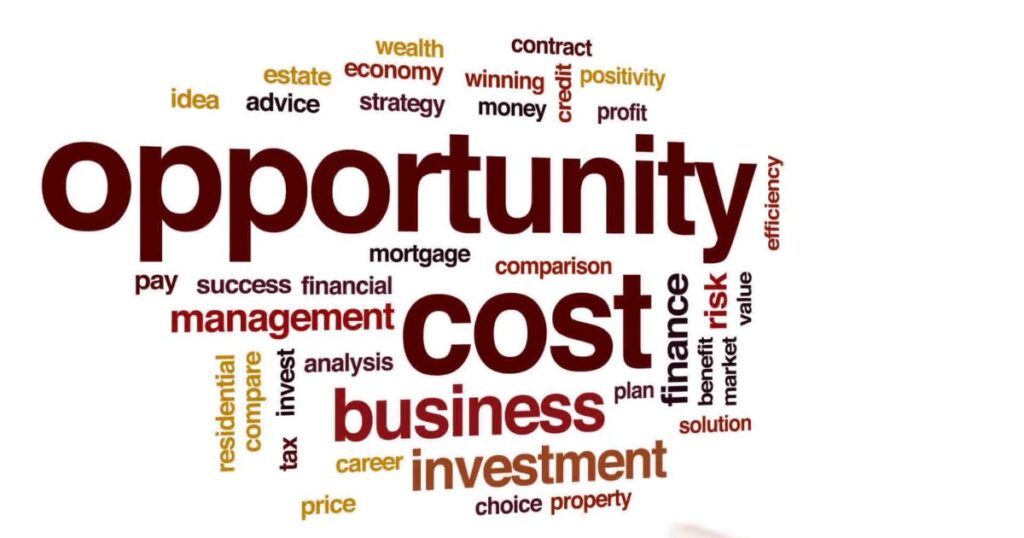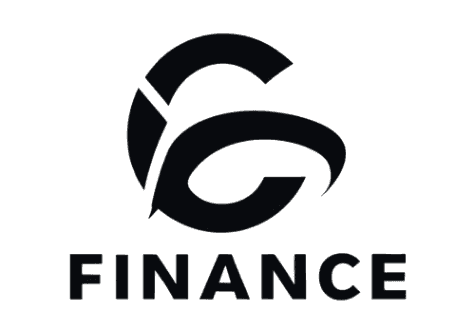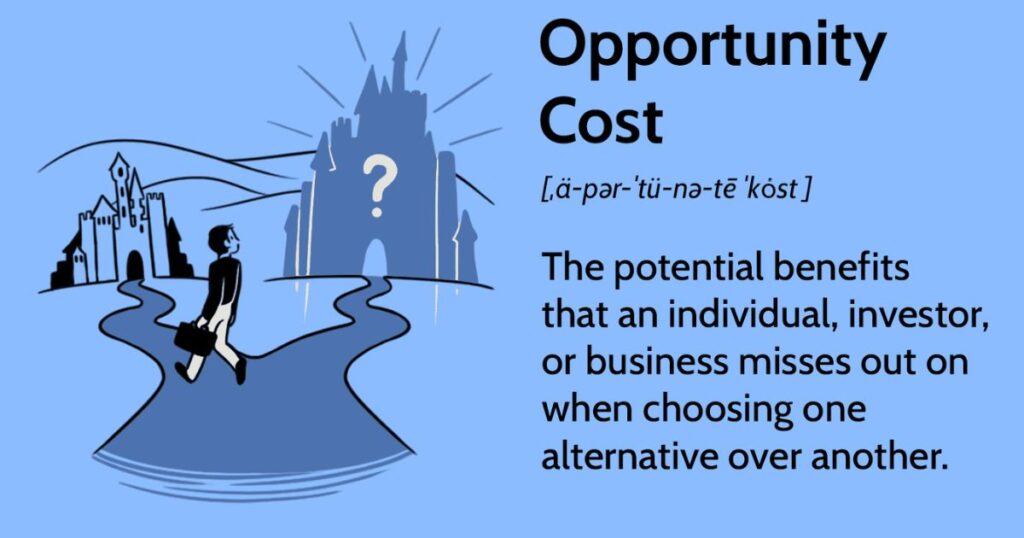In the complex world of finance, understanding opportunity cost can be your secret weapon for making wiser decisions. Whether you’re mulling over a major purchase, considering a career change, or plotting your next big investment, grasping this concept is crucial. This guide will walk you through the ins and outs of opportunity cost, showing you how to apply it to your financial decision-making process and ultimately achieve better outcomes.
Opportunity Cost Explained
At its core, opportunity cost is all about trade-offs. It’s the value of what you give up when you choose one option over another. Think of it as the road not taken in your financial journey. Every time you spend money or invest time in something, you’re also deciding not to use those resources elsewhere. That’s opportunity cost in action.
Understanding opportunity cost is like having a financial superpower. It helps you see beyond the surface of your choices and consider the hidden implications. By factoring in opportunity cost, you’re not just looking at what you gain from a decision, but also what you might be missing out on. This broader perspective is crucial for making truly informed economic choices that align with your long-term goals and values.
How to Calculate Opportunity Cost
Calculating opportunity cost isn’t as daunting as it might seem. The basic formula is simple: Opportunity Cost = Value of Best Alternative – Value of Chosen Option. Let’s break it down with an example. Imagine you have $1,000 to invest. You’re torn between putting it in a high-yield savings account earning 2% annually or investing in stocks with an expected return of 7% but higher risk.
If you choose the savings account, your opportunity cost is the potential 5% extra return you could have earned in stocks (7% – 2% = 5%). In dollar terms, that’s $50 per year ($1,000 * 5%). This calculation helps you weigh the trade-off between safety and potential returns, a key aspect of investment analysis.
Opportunity Cost vs. Opportunity Benefit
While opportunity cost focuses on what you give up, opportunity benefit looks at what you gain from a decision. These two concepts work hand in hand to provide a complete picture of your financial choices. Understanding both sides of the coin is crucial for rational financial choices.
Consider the case of Sarah, a software developer weighing two job offers. Job A offers a $100,000 salary with standard benefits, while Job B offers $90,000 but includes stock options and more flexible hours. The opportunity cost of choosing Job B is $10,000 in base salary. However, the opportunity benefit includes potential stock growth and better work-life balance. By considering both aspects, Sarah can make a more holistic decision that aligns with her career goals and personal values.
What Opportunity Cost Tells Businesses

Opportunity cost is a crucial concept for businesses, guiding strategic decisions and resource allocation. It helps companies prioritize projects, allocate capital efficiently, and maximize value creation. By considering opportunity cost, businesses can avoid pursuing projects that seem profitable in isolation but may not be the best use of resources when compared to alternatives.
| Insight | Description | Example |
| Resource Allocation | Helps determine the most efficient use of limited resources | Choosing between expanding production or entering new markets |
| Project Prioritization | Assists in ranking projects based on their potential return and risk | Deciding between R&D investment or marketing campaign |
| Hidden Costs | Reveals indirect costs that might be overlooked in traditional accounting | Time spent on one project means less time for others |
| Long-term Strategy | Guides long-term planning by considering future opportunities | Investing in automation vs. hiring more staff |
| Competitive Advantage | Identifies areas where a company can outperform competitors | Specializing in a niche market vs. broad product offering |
Weighing Opportunity Cost
When it comes to financial priorities, numbers don’t tell the whole story. Weighing opportunity cost effectively requires considering both quantitative and qualitative factors. While it’s important to crunch the numbers, don’t forget to factor in intangible benefits like personal satisfaction, career growth, or work-life balance.
A useful strategy is to create a decision matrix that includes both financial projections and a scoring system for non-monetary factors. This approach allows you to visualize the trade-offs more clearly and make decisions that align with your overall life goals, not just your financial objectives. Remember, the goal isn’t always to maximize monetary return, but to optimize your overall well-being and satisfaction.
READ MORE: Grants for Investing Property: A Comprehensive Guide
Explicit Costs
Explicit costs are the direct, out-of-pocket expenses associated with a decision. These are the costs that immediately impact your wallet or a company’s bottom line. In personal finance, explicit costs might include the price tag on a new car, monthly rent, or grocery bills. For businesses, they could be wages, raw materials, or utility expenses.
Understanding explicit costs is crucial for accurate budgeting strategies and financial planning. They’re typically easier to identify and measure than implicit costs, but that doesn’t mean they should be the only factor in your decision-making process. Always consider explicit costs in conjunction with implicit costs and opportunity costs for a comprehensive financial analysis.
Implicit Costs
Implicit costs are the hidden or indirect costs associated with a decision. These costs don’t involve direct cash outlay but represent the value of opportunities foregone. For instance, if you decide to start your own business, the implicit cost might be the salary you give up from your previous job. For a company, using a building it owns for operations has the implicit cost of not being able to rent out that space.
Recognizing and quantifying implicit costs is crucial for true economic efficiency. They often go unnoticed in traditional accounting but play a significant role in economic decision-making. By factoring in implicit costs, you get a more accurate picture of the true cost of your choices, leading to more informed and potentially more profitable decisions in the long run.
Opportunity Cost and Profits
Understanding opportunity cost is key to maximizing profits, whether you’re running a business or managing your personal finances. It’s not just about how much money you make, but how efficiently you’re using your resources to generate that income. This perspective can dramatically shift how you evaluate financial success and make decisions.
By incorporating opportunity cost into your profit calculations, you move beyond simple accounting profits to consider economic profits. This broader view can reveal hidden inefficiencies and untapped opportunities, potentially leading to more strategic and lucrative choices. It’s about optimizing your return on investment (ROI) by ensuring that every dollar and hour is put to its best possible use.
Accounting Profit
Accounting profit is what most people think of when they hear the word “profit.” It’s simply your total revenue minus your explicit costs. While this figure is important for tax purposes and gives a snapshot of your financial performance, it doesn’t tell the whole story when it comes to making smart financial decisions.
Consider a small business owner who reports an accounting profit of $50,000 for the year. On paper, this looks good. But what if running this business required 80-hour work weeks and significant stress? The accounting profit doesn’t capture these implicit costs. That’s why savvy decision-makers look beyond accounting profit to consider economic profit, which factors in opportunity cost.
Economic Profit
Economic profit takes your financial analysis to the next level by incorporating opportunity cost. It’s calculated by subtracting both explicit and implicit costs from total revenue. This gives you a more accurate picture of the true profitability of your choices, considering all the resources you’re using.
Let’s revisit our small business owner. While their accounting profit was $50,000, let’s say they could have earned $60,000 working a regular job with better hours. In this case, their economic profit would actually be negative $10,000. This doesn’t necessarily mean they should close the business, but it does prompt a deeper evaluation of their choices and whether the non-monetary benefits of running their own business outweigh this economic loss.
Opportunity Cost Examples
Opportunity cost plays a role in countless decisions we make every day. Let’s explore some common scenarios to illustrate how this concept applies in real life. By examining these examples, you’ll gain a better understanding of how to apply opportunity cost thinking to your own financial choices.
Consider the classic dilemma of renting versus buying a home. The explicit cost of renting might be lower in the short term, but the opportunity cost includes potential equity build-up and property value appreciation. On the flip side, buying ties up a significant amount of capital that could have been invested elsewhere. Understanding these trade-offs is crucial for making a decision that aligns with your long-term financial planning goals.
Calculate Opportunity Cost With Accounting Software

In today’s digital age, leveraging technology can greatly simplify the process of calculating and tracking opportunity costs. Many accounting software packages now include features that allow you to model different scenarios and compare potential outcomes. This can be invaluable for both personal financial planning and business decision-making.
When choosing software to help with opportunity cost calculations, look for features like scenario modeling, customizable reports, and the ability to input both quantitative and qualitative factors. Some popular options include QuickBooks for small businesses, Personal Capital for individual investors, and more advanced tools like Oracle NetSuite for larger corporations. By using these tools, you can more easily visualize the long-term implications of your choices and make decisions that optimize your financial priorities.
Discover How Financial Modeling Can Drive Business Success
Financial modeling is a powerful tool that can take your understanding of opportunity cost to the next level. By creating detailed projections of various scenarios, you can better understand the potential outcomes of your decisions and identify the option that offers the best balance of risk and reward.
To get started with financial modeling, begin by clearly defining your objectives and the key variables that will impact your decision. Then, create a spreadsheet that projects cash flows, costs, and other relevant metrics for each option you’re considering.
Don’t forget to factor in both explicit and implicit costs, as well as potential benefits. As you refine your model, you’ll gain deeper insights into the true opportunity costs of your choices, enabling you to make more informed and potentially more profitable decisions.
FAQs
How does opportunity cost relate to the concept of scarcity?
Opportunity cost stems directly from scarcity. Because resources are limited, choosing one option means giving up another, forcing us to make trade-offs in our decisions.
Can opportunity cost be negative?
Opportunity cost can be negative if the alternative you didn’t choose would have resulted in a worse outcome. This scenario means you made the best possible choice among your options.
How does the time value of money factor into opportunity cost?
Time value of money is crucial in calculating opportunity cost, especially for long-term decisions. It considers how the value of money changes over time due to its potential to earn returns.
Conclusion
Understanding and applying the concept of opportunity cost is a game-changer for your financial decision-making. It pushes you to think beyond the immediate and obvious, considering the full spectrum of possibilities and their potential outcomes. By incorporating opportunity cost analysis into your financial strategy, you’re equipping yourself to make choices that align more closely with your long-term goals and values.
Remember, the goal isn’t to agonize over every decision, paralyzed by the fear of missing out. Instead, use opportunity cost as a tool to make more informed, confident choices. Start small by applying this concept to everyday decisions, and gradually work your way up to bigger financial choices. With practice, considering opportunity cost will become second nature, leading to smarter financial choices and, ultimately, a more satisfying and prosperous financial journey.

Howdy, editor at FinanceEon.com, brings over a decade of financial journalism experience. He ensures accuracy and insightful analysis, guiding a team on market trends and investment strategies.







